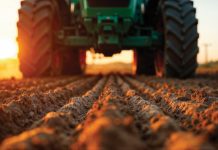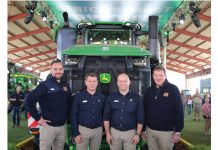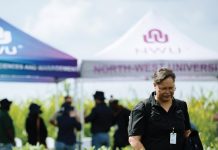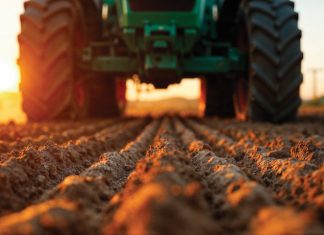The InnoFoodAfrica (IFA) project started in August 2020 as a multidisciplinary project to tackle challenges in African agro-processing value chains. The focus is on climate-smart crops and smallholder farmers.
VTT (Finland) is the project leader with five European partners and 13 African partners from Kenya, Uganda, Ethiopia and South Africa. The project is funded by the Horizon 2020 research and innovation programme of the European Union (EU) under grant agreement number 862170. South African partners include the University of Pretoria (UP) as academic partner and Delphius Technologies & Consultancy cc as commercial partner. As part of the survey on farmers done in KwaZulu-Natal (KZN), the University of KwaZulu-Natal (UKZN) College of Agriculture, Engineering and Science (CAES) became involved in partnership with Delphius Technologies and UP.
Surveys form an important part of the project, especially to understand the needs of smallholder farms, who supply a vast amount of Africa’s food. By collecting survey data, production challenges can be better understood, including the need for value addition and waste stream beneficiation. For example, pest control and shelf-life challenges are common issues on smallholder farms, where existing solutions are either unaffordable or unpractical. Innovation is needed to address these challenges. More information on the project can be found at http://innofoodafrica.eu.
Information about the commercial sector of maize farming in South Africa is readily available and regularly updated by the South African Grain Information Service (SAGIS) and other commercial bodies, but smallholder farms and the informal sector are underrepresented and it is difficult to obtain accurate data. Some data on smallholder farms are available from the national census reviews (StatsSA), but that data are often outdated. The IFA project aimed to get a better understanding of the current situation, including the challenges facing the informal sector, in order to identify opportunities for improvement. The results can assist policy makers on decisions in terms of future farmer support through agricultural extension services or funding mechanisms.
Maize was selected as the model cereal for South Africa because it is a major staple agricultural crop. The ideal situation would have been to do a survey in all the provinces, but due to a limited budget only farms in a neglected province (KZN) were surveyed.
Description of study area, sampling procedures and participants
The study was conducted in three locations, Swayimana, Nhlazuka and Umbumbulu in KZN from December 2021 to January 2022. Swayimana (S29°29’16”, E30°39’36”) and Nhlazuka (S30°11’22”, E29°55’55”) fall under the uMgungundlovu district municipality, while Umbumbulu (S29°59’4.5168″, E30°42’14.7528″) is within the Ethekwini district. The areas have an average annual rainfall of between 700 and 1 000 mm, with frequent thunderstorms and intermittent dry spells. The area is classified as having above average agricultural potential in the KZN region and is well adapted for the production of a range of both industrial and food crops.
About 300 randomly selected households from each location were targeted. Focus group discussions were conducted in each location, comprising ten key informants including individuals who had great knowledge about the villages, the farms, crops and local conditions and problems in the district. Selection of this group was done in consultation with the local municipal and tribal leadership with knowledge of the farmers around the areas facilitated by UKZN.
Primary data were collected using participatory methodologies through a structured survey to obtain characteristics of the farmers in the districts. The structured survey served as a control for checking or comparing information obtained through participatory methods. Information was gathered through a questionnaire administered to the farmers by the facilitators. The enumerators used the ODK (https://getodk.org/#features) data collection application installed on smart phones to collect data from the respondents using the questionnaires. The questionnaires were saved onto the ODK server system. Upon completion of the survey, data were then retrieved from the server onto an Excel file for analysis.
In order to save time and to limit the need for unnecessary travel in an area with poor infrastructure, only one combined questionnaire was compiled. The questionnaire consisted of 41 questions in a multiple-choice format to make data collection easier. Apart from maize, the participants also provided information on other crops used for intercropping, including crops such as sweet potatoes, Bambara groundnuts, cowpeas, beans, madumbe (taro) and other vegetables.
Results
Results of 842 farms were included in this survey – 78% of farmers planted white maize, 10% planted yellow maize and 12% planted both types. While 22% of farms planted only maize, 78% did intercropping.
Most of the farms were quite small (Graph 1), with 65% of them less than 1 ha. Most of the planted maize (74%) was used as human food and eaten as a vegetable (corn on the cob). It is a very popular product which is either boiled or fried and often sold on the side of the road in the summer months. Corn on the cob makes up a significant percentage of the developing farmer maize crop, but no formal data on the size of corn on the cob production in South Africa are kept. It is a highly seasonal crop with a short shelf-life similar to that of vegetables, but because of its reliable yield, popularity and also cultural significance, there may be opportunities to optimise fast-growing, disease-resistant cultivars specifically for corn on the cob. Currently, very little maize is sold from these farms (1%), indicating that almost the entire crop is used for own consumption.
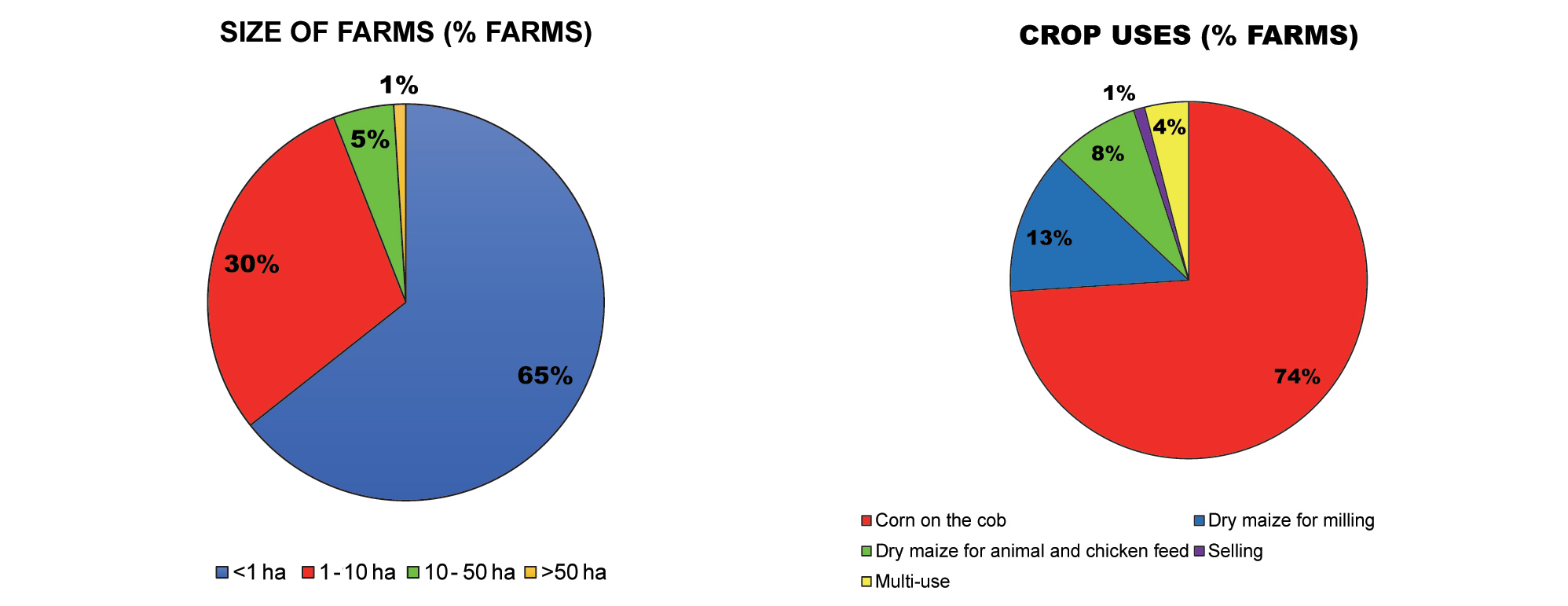
In terms of crop losses (Graph 2), 33% of the farms had losses of less than 10% and only 0,1% indicated a loss of more than 80% for the 2021/2022 season. Crop losses happened for many reasons, including diseases, insect damage, damage by animals and birds and even theft.
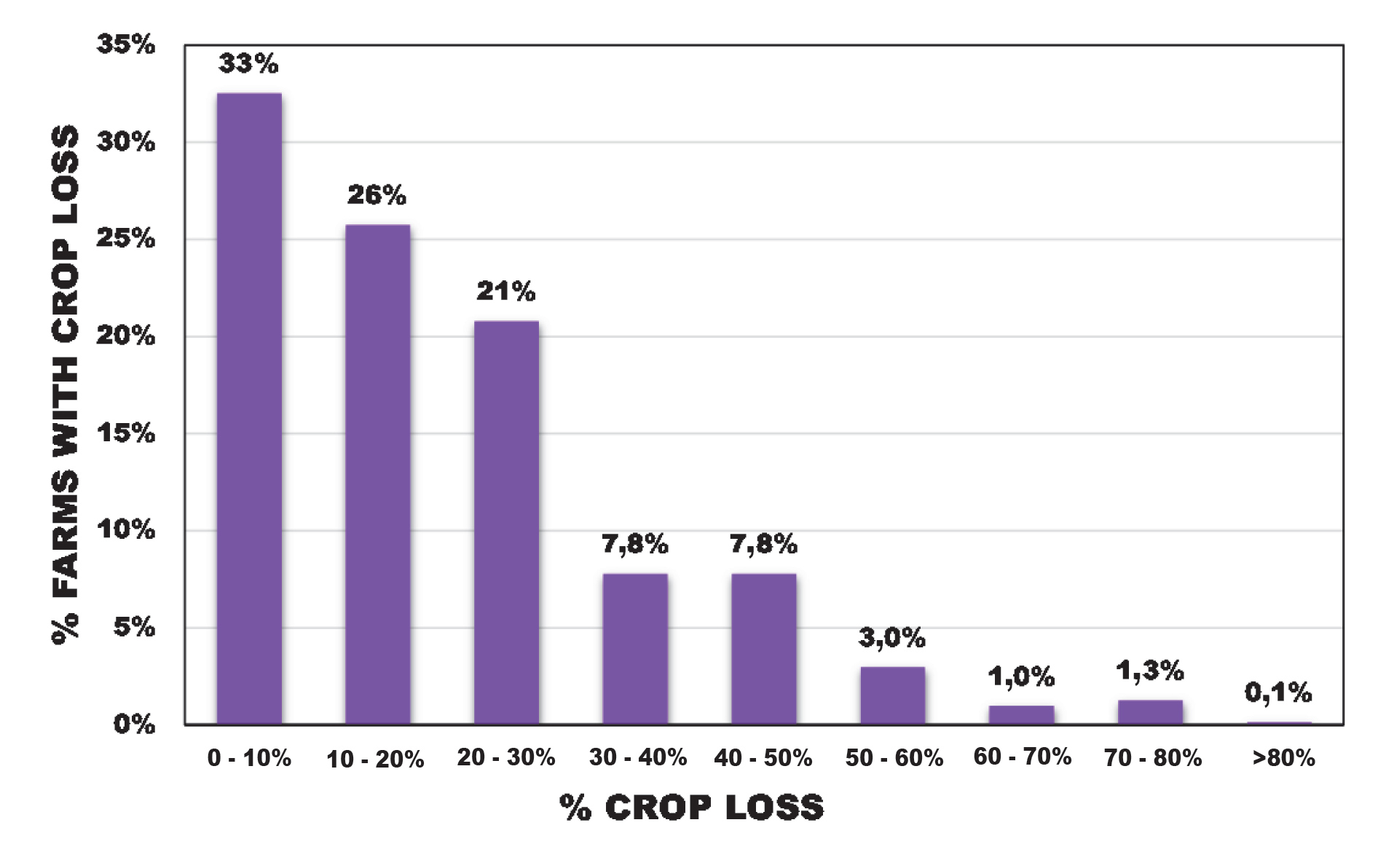
The extent of damage caused by three major maize pests, including stem borer, maize weevil and larger grain borer, is shown in Graph 3 to 5. Unfortunately, in a large percentage of cases, no data were available on the pests. This could be due to a lack of knowledge to identify the pest and also a lack of record-keeping which is a common reality for informal farmers. However, it is concerning that 5% of farms had more than 80% of the crops lost due to stem borer. Most of the losses will be used as compost or animal fodder (Graph 6) as part of the side streams (such as leaves and cobs).

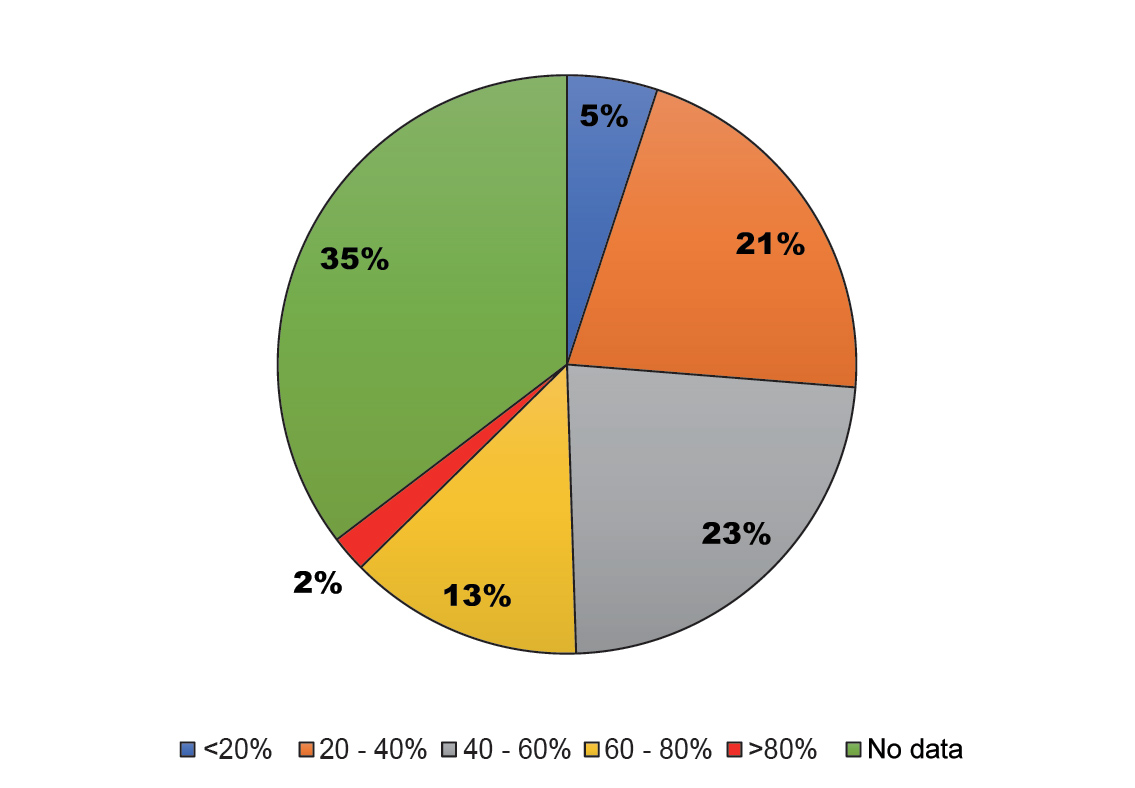
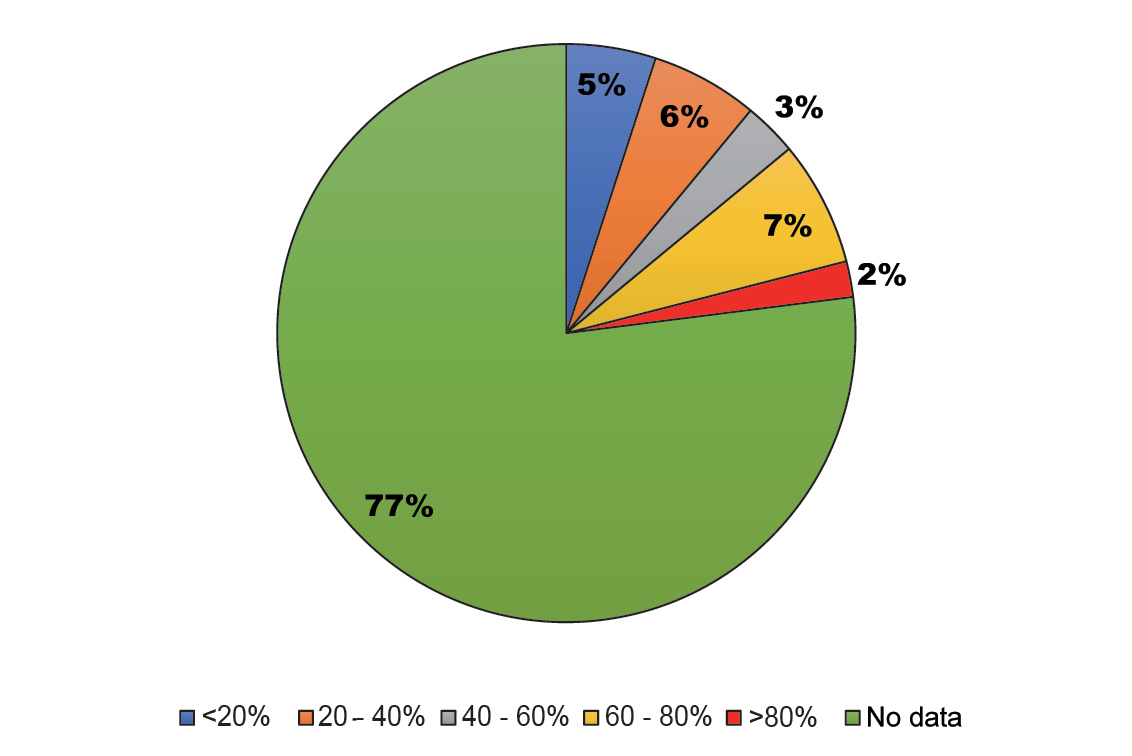
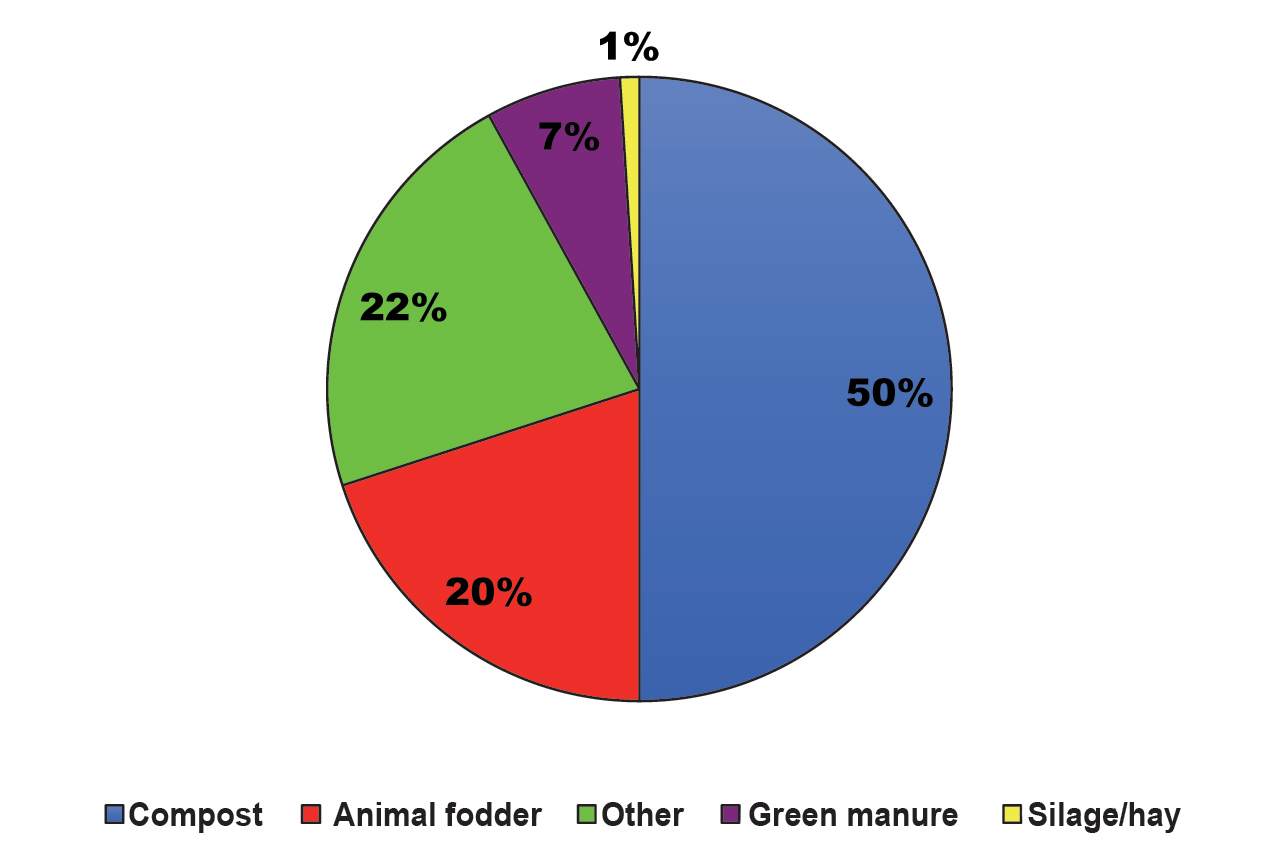
Informal farmers do not have the cash to buy fertiliser or animal feed and therefore no part of the crop is wasted, as composting and animal feeds have to come from any side streams available. A well-designed composting system adds value to the soil and is therefore an opportunity for improvement. Feedback from the respondents has indicated that the biggest problem that caused losses in general were all types of insect damage. The lack of funding prevents farmers from implementing effective pest control systems. As can be seen in Graph 7, 32% of farmers indicated that additional funding would greatly assist them, but it is also interesting to see that many farmers indicated a need for crop insurance and security.

Only 5% indicated a need for irrigation systems, probably due to the fact that the KZN area receives very high rainfall. Quite a few farmers (12%) indicated that better market access would benefit them the most. The very low percentage who indicated currently selling their maize, is a symptom of a logistical challenge in getting the produce to the markets in the urban areas linked to existing bad road infrastructure in the area.
Conclusion
In conclusion, the biggest benefit to the farmers, apart from funding, will be to investigate options for novel and affordable pest control systems, which will greatly reduce existing crop losses. Research is needed for better utilisation of current waste streams as compost streams to replace expensive fertiliser. Research into the use of eating maize as a vegetable needs better support – as it is a major crop due to its reliability and cultural significance. The planting of disease-resistant, quick-growing varieties specifically developed for this application is an opportunity to increase yield and food security, especially if the maize can be marketed better in the large urban areas.
The results shown here are only a selection from a much larger dataset and more information is available from the corresponding author.
This project has received funding from the European Union’s Horizon 2020 research and innovation programme under grant agreement number 862170.



